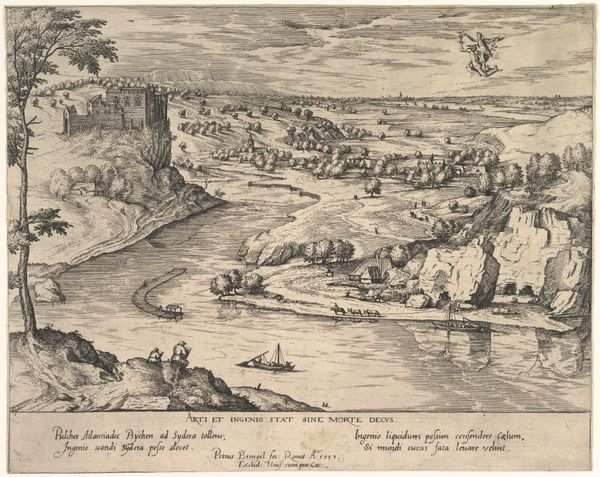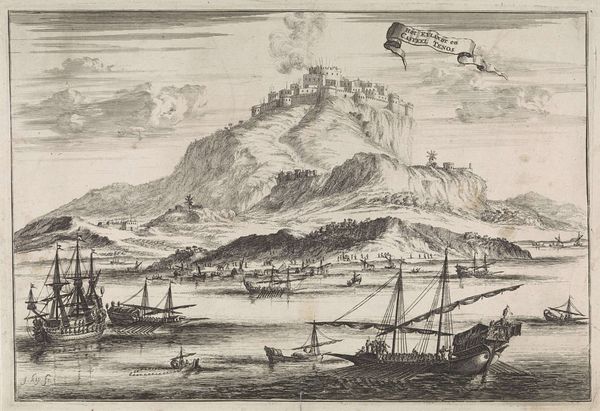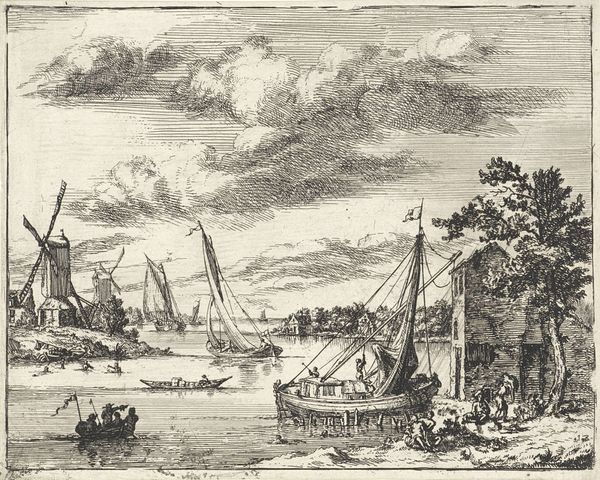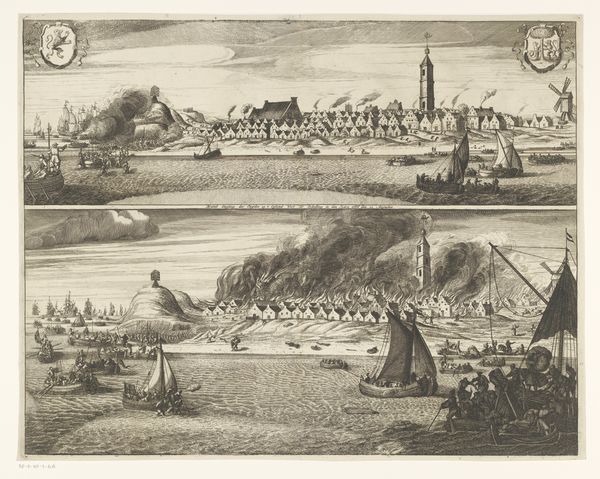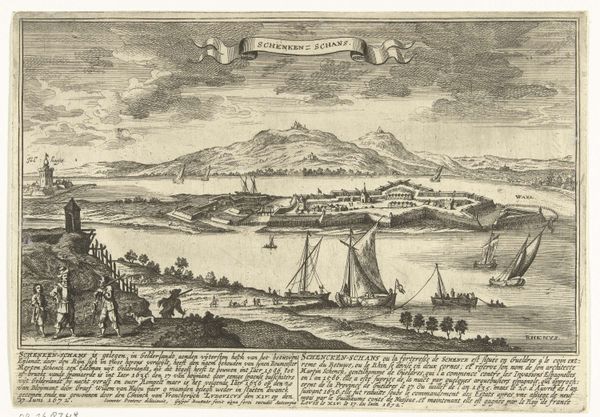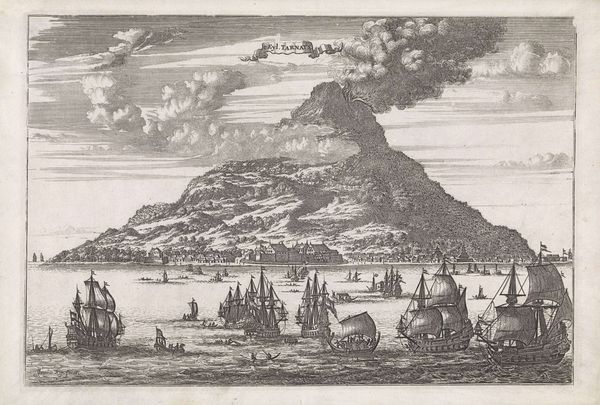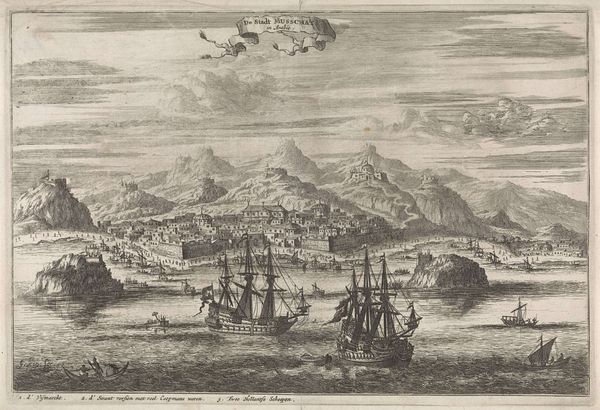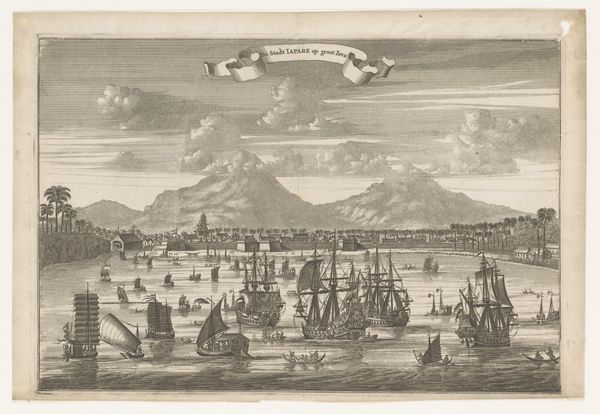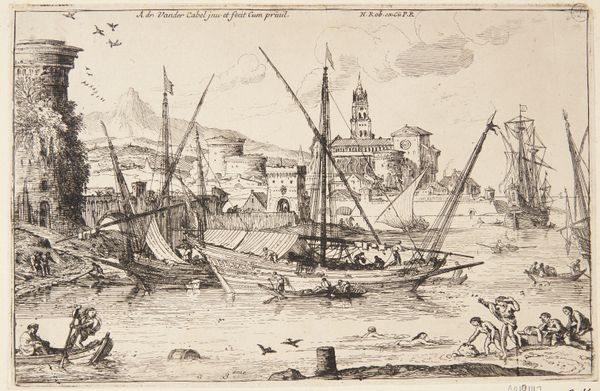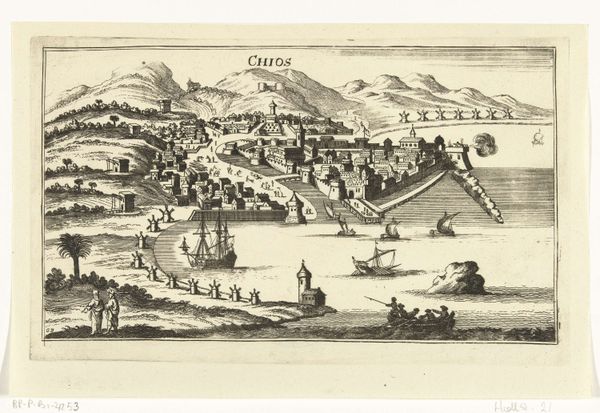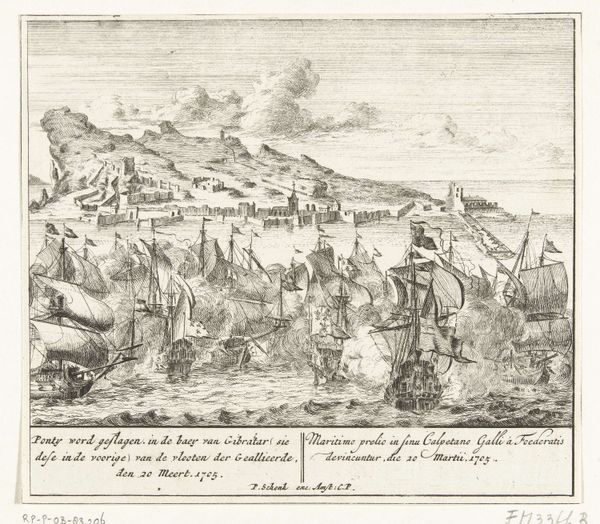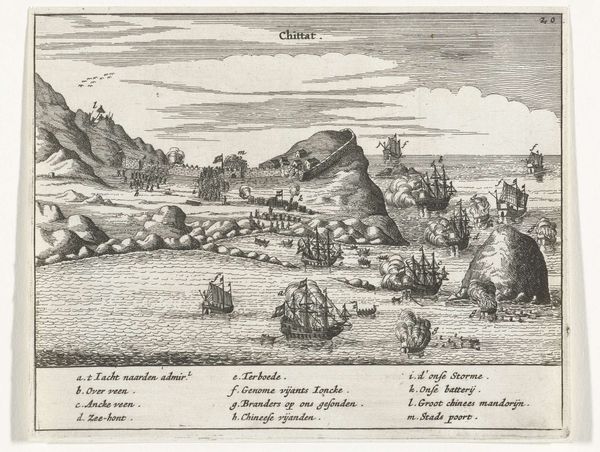
River Landscape with Daedalus and Icarus 1590 - 1600
0:00
0:00
drawing, print, etching, engraving
#
drawing
#
narrative-art
# print
#
etching
#
landscape
#
figuration
#
history-painting
#
engraving
Dimensions: Sheet: 10 7/16 x 13 1/4 in. (26.5 x 33.7 cm)
Copyright: Public Domain
Curator: Our next stop features "River Landscape with Daedalus and Icarus," an etching and engraving dating to around 1590-1600. Editor: Wow, it's remarkably detailed for its size. Look how delicate those lines are! The overall feeling is serene, almost bucolic... until you notice those tiny figures plummeting from the sky. Talk about a downer for the boating trip! Curator: Exactly! It's a fascinating juxtaposition. This piece by Simon Novellanus presents a broad, tranquil vista, but subtly incorporates the dramatic myth of Daedalus and his son. Icarus, of course, flew too close to the sun, melting his wax wings. Editor: The imagery is so potent, even now. That feeling of wanting something so badly—freedom, escape, knowledge—that you risk everything, even ignoring the wisdom of elders… Or the laws of physics! I suppose it's a metaphor for youthful hubris, perhaps? Curator: I think that’s a great starting point. Consider the landscape. The ships sail on, unaffected by the tragedy unfolding above. Life goes on, whether we succeed or fail, which reinforces Icarus’ folly against a grand, indifferent backdrop. Editor: It really puts things in perspective. It’s almost as if Novellanus is commenting on the smallness of human ambition, even as it soars, against the backdrop of an eternal landscape and continuous movement in commerce, history. This little drama of father and son looks inconsequential compared to the scale of nature. Curator: Absolutely, the landscape itself becomes symbolic. It’s a world of trade and transport – safe travels that the artist is juxtaposing against a tragedy. By framing the Icarus myth within the genre of landscape, Novellanus prompts a very intriguing re-reading of the tale. Editor: It’s definitely a piece that rewards a second, or third, look. So seemingly calm, yet brimming with cautionary symbolism about recklessness and nature’s stoic indifference. Thanks for pointing out some of these clues! Curator: My pleasure! The joy of art lies in these kinds of unfolding revelations and visual clues that spark curiosity!
Comments
No comments
Be the first to comment and join the conversation on the ultimate creative platform.
